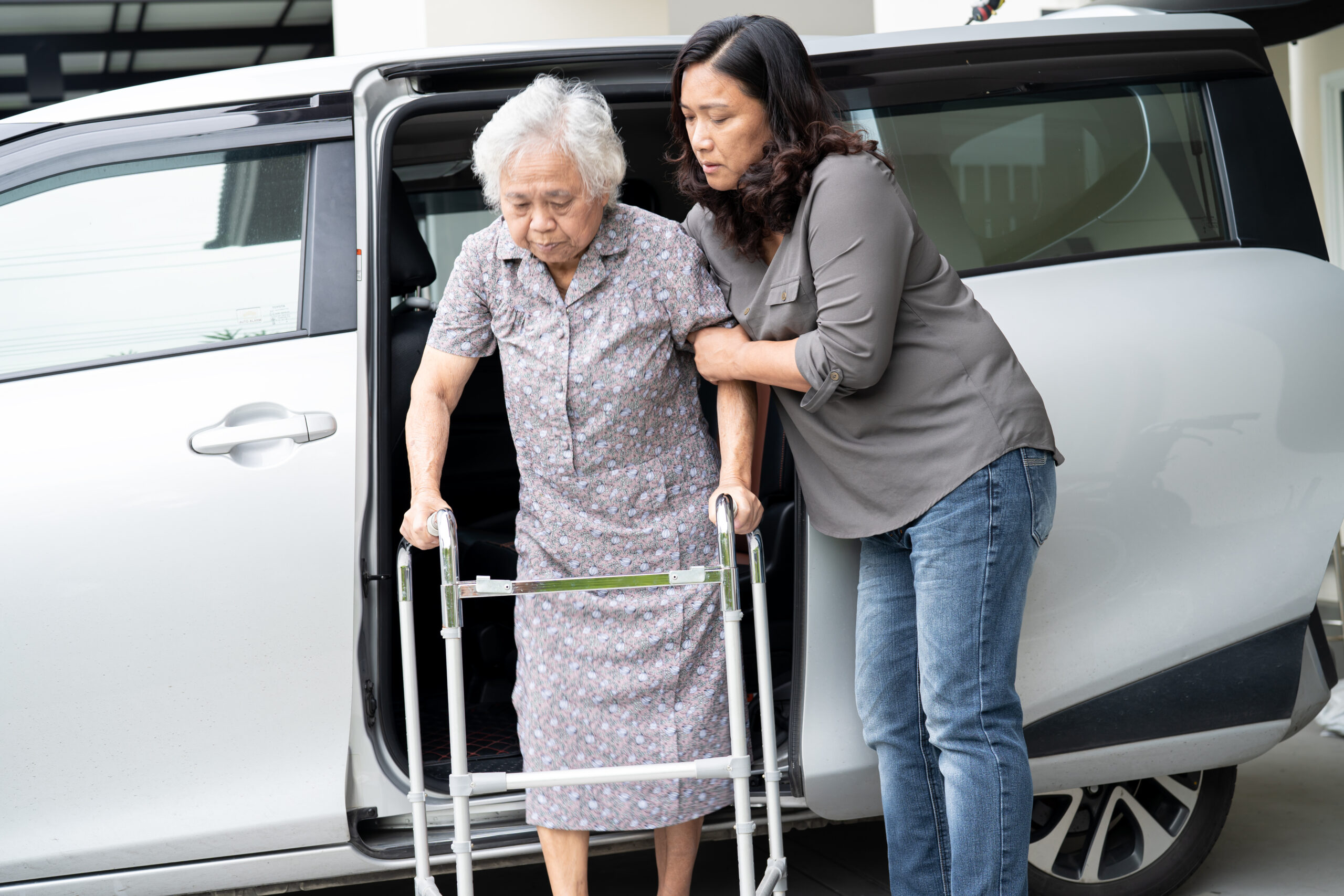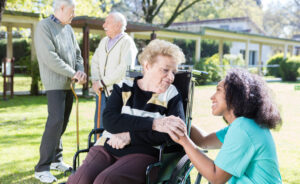Aging is a natural process, and with it comes a myriad of changes that can impact our quality of life. One of the most significant changes that occur is the gradual decline in our mobility, leaving us vulnerable to falls and injuries. Mobility issues can impact our ability to care for ourselves and can even result in social isolation. In this blog post, we will discuss the third M in the 4ms framework – Mobility. We will talk about how changes in mobility as we age can affect our lifestyle and what we can do to preserve our mobility and address mobility issues with our provider. We will also address common changes we may experience, prevent falls, and highlight treatment options, such as physical therapy and home modifications.
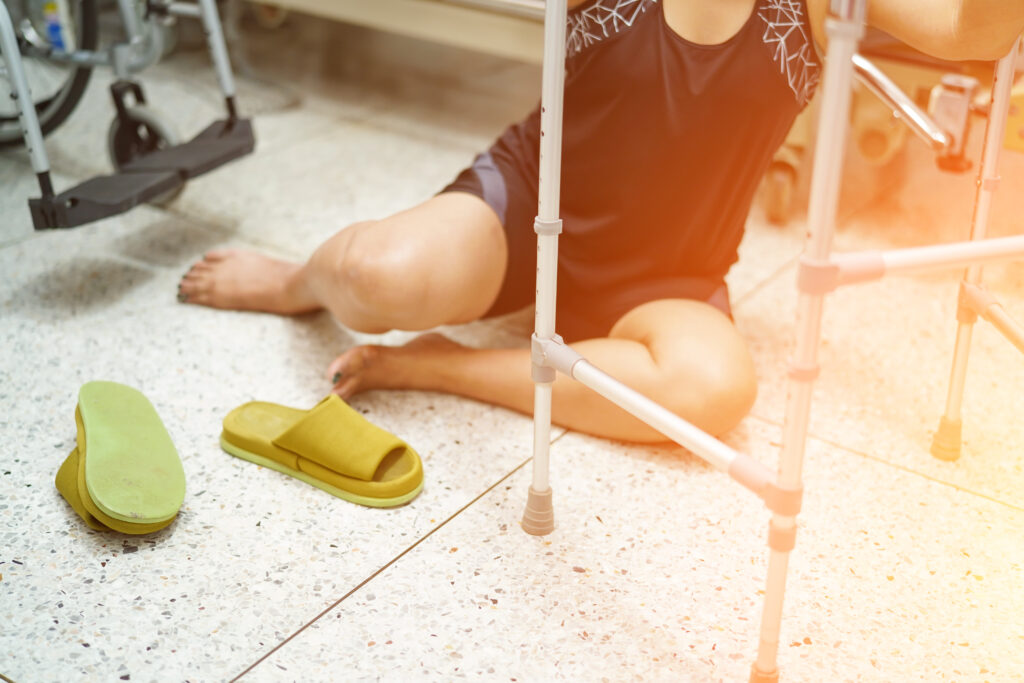
By amazing studio Adobe Stock photos
Preventing Falls:
Falls are a significant concern for older adults, as they can lead to serious injuries such as hip fractures or head trauma. Preventing falls involves several steps, such as reviewing medication with your doctor, keeping your home clutter-free, removing throw rugs, ensuring adequate lighting, (night lights) and using assistive devices for balance, stability, and support. Some seniors find it helpful to keep a flashlight handy in their bedroom at night. It’s also essential to stay active with gentle exercises like Tai Chi or Yoga, (even chair yoga is helpful) which can improve strength, flexibility, and balance.
One of the significant concerns for seniors is their increased risk of falling. Falls can cause severe injuries and even be life-threatening for the elderly. Seniors should take precautionary measures such as staying alert for hazards, clearing clutter, improving lighting, and using assistive devices such as canes, walkers, or wheelchairs. In addition, they should consult with their healthcare providers to assess their fall risk and discuss any medications that may increase their risk of falling.
There could be many reasons for being at risk of falling. Medication can be a big reason. There is a list of high-risk medications that can affect mentation which could then impact the risk for falls. You can see these in more detail with our previous blog post on High-Risk Medications.
Something as simple as your “inner ear canal crystals” being out of sync can cause severe dizziness as well as other symptoms such as headache, nausea as well as others. Mayo clinic shared information on some of these illnesses such as:
- Benign paroxysmal positional vertigo (BPPV): This condition causes an intense and brief but false sense that you’re spinning or moving. The most common cause of BPPV is aging, but it can also result from a head injury 2.
- Labyrinthitis: This condition occurs when an infection affects both branches of the vestibulo-cochlear nerve, resulting in hearing changes as well as dizziness or vertigo 3.
- Vestibular neuritis: A viral infection of the vestibular nerve that can cause intense, constant vertigo 2.
Your provider or a physical therapist trained in vestibular assessments and treatments can help you determine the cause and best way to treat.
Falls are one of the primary concerns for aging adults and their caregivers. According to the National Council on Aging (NCOA), falls are the leading cause of injuries and death among older adults. Therefore, fall prevention becomes a top priority in preserving mobility. Some tips to prevent falls include:
- Exercise regularly to improve balance, strength, and flexibility. (An assessment by physical therapy may be a good place to start and can provide you with a home exercise program.
- Remove tripping hazards at home, such as clutter, loose carpets, and cords.
- Install grab bars and nonslip mats in the bathroom and shower. If you suffer from an illness with shortness of breath, you may place chairs at strategic spots in your home to allow you a rest break while needing to walk to different areas of your home. Make sure you have your adaptive equipment and grab bars installed by someone that is experienced in installing safety equipment.
- Wear sturdy, comfortable footwear with nonskid soles.
- Review medications regularly with your healthcare provider as some medications can increase the risk of falls. See the high-risk medications for seniors.
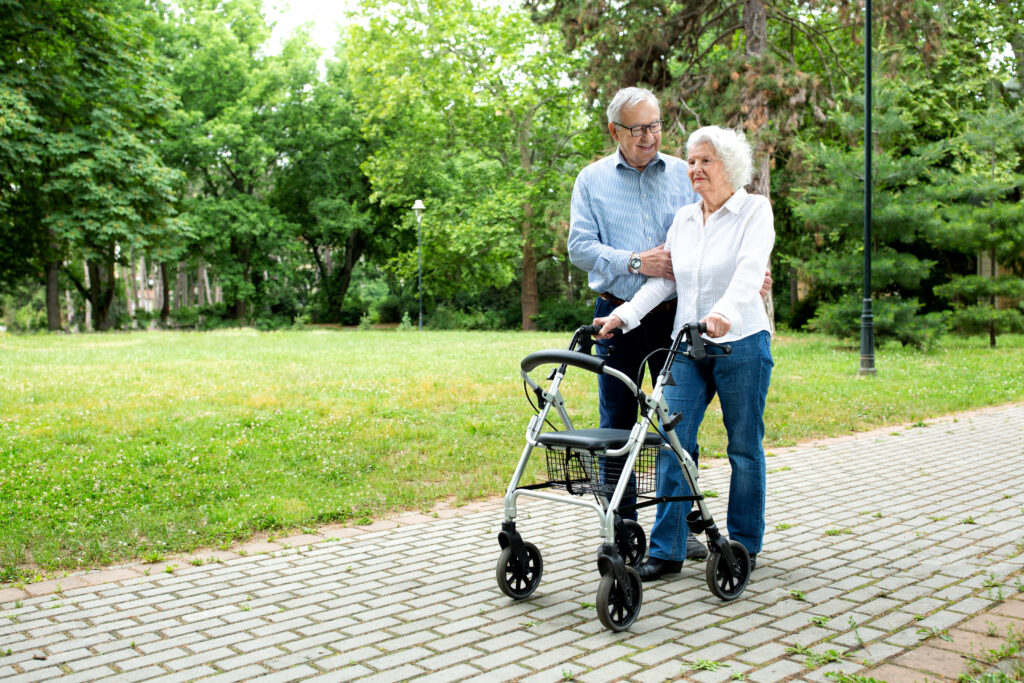
Preserving Mobility:
It’s essential to understand that changes in mobility are a natural part of aging. As we age, we begin to lose muscle mass, strength, and bone density, which can affect balance, coordination, and mobility. However, several factors can exacerbate or make mobility issues worse, such as a sedentary lifestyle, chronic illness, medication use, or injury. It’s essential to seek medical attention if you experience any sudden changes in mobility, as this can be a sign of an underlying issue that needs to be addressed.
Moreover, seniors can benefit from making equipment modifications in their homes such as installing handrails, installing a handheld showerhead, or lowering the height of appliances. These modifications can make it much easier for seniors to perform daily tasks such as showering, cooking, and using the bathroom. Additionally, seniors can use home health aides by hiring one or with one provided by the State. These personal care assistants can help with tasks such as bathing, dressing and medication management, light housekeeping, or meal preparation. See our blog post on Hiring a Private Caregiver.
As we age, we may experience various changes in our mobility, such as reduced strength, flexibility, and balance. However, with proper care and management, we can preserve mobility and stay active despite these changes. Here are some tips to maintain mobility:
Seniors can try low-impact exercises such as walking, swimming, cycling, and yoga to improve mobility gradually. With time and consistency, exercise can help improve mobility, making it easier for older adults to perform daily tasks.
1. Engage in regular physical exercise to maintain muscle strength, flexibility, and balance.
2. Eat a healthy, balanced diet to support overall health and well-being.
3. Get regular vision and hearing exams to ensure optimal function.
4. Practice good posture to maintain flexibility and balance.
5. Use assistive devices or home modifications to aid mobility challenges, such as walkers, canes, handrails, and ramps.
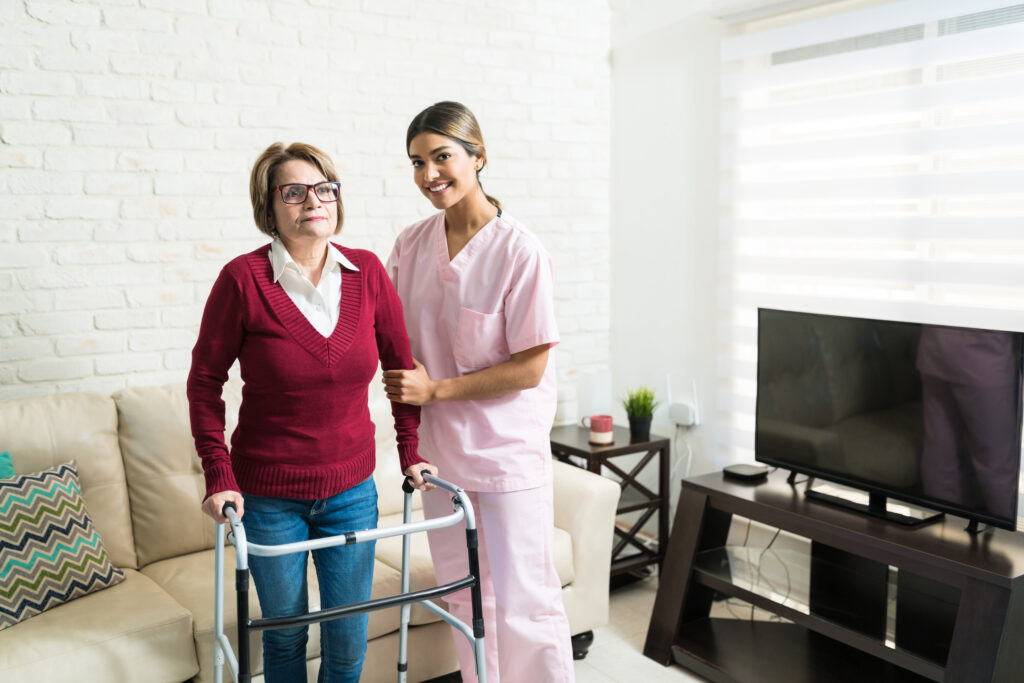
Physical Therapy:
Physical therapy can be an effective tool in improving mobility challenges in aging adults. A physical therapist can assess an individual’s needs and create a personalized exercise plan to improve strength, balance, and flexibility. Physical therapy can also help individuals learn proper posture, improve gait and balance, and reduce pain and discomfort.
Additionally, PT may involve practicing functional activities such as walking, getting up from a chair, or transferring from one surface to another. Home-based PT is also an option and allows individuals to work on their mobility from the comfort of their homes.
Physical therapists can help seniors improve their mobility and prevent falls through targeted exercises and manual therapy. They can also help seniors make modifications to their home, such as installing grab bars, to make it safer and more accessible. Physical therapy can be done in a clinic or in-home therapy, depending on the senior’s preferences and availability. A home care agency may be able to have a therapist perform a “home safety” evaluation and make recommendations as to how to improve your home to reduce the risk of falls and make it easier for you to perform your day-to-day tasks.
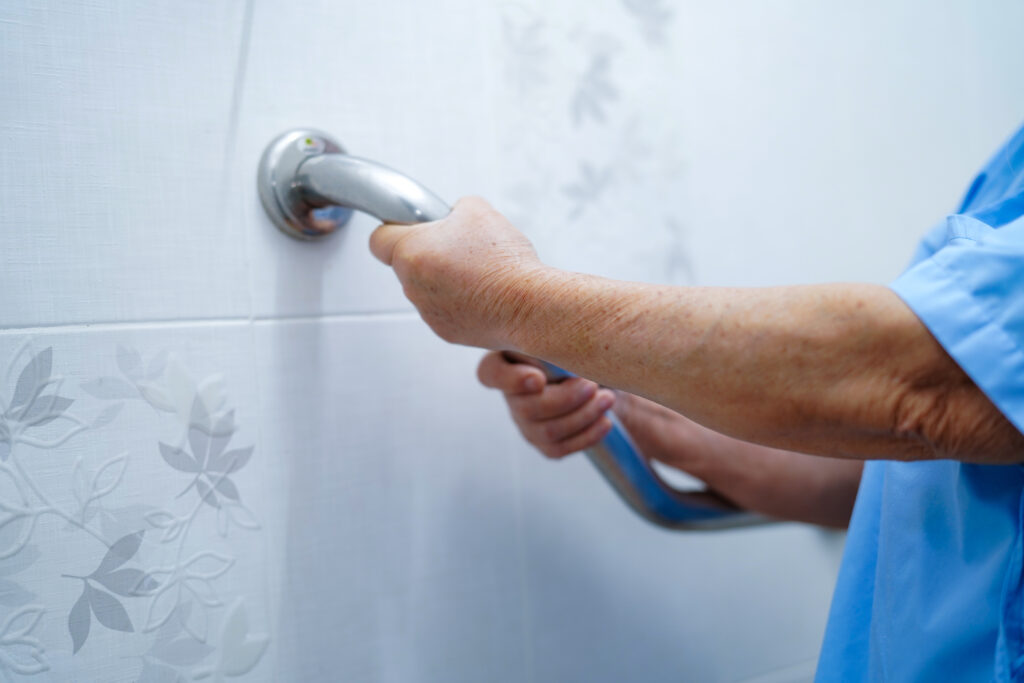
By amazing studio Adobe Stock Photos
Home Modifications:
Home modifications such as grab bars, shower seats, tub benches, and wheelchair ramps can also improve mobility. It may be helpful to consider working with an occupational therapist, who can make recommendations for home modifications based on your specific needs and abilities.
Common changes we see in our aging adults when it comes to their mobility include a decrease in gait (walking) speed, stride length, (the length of your steps) and step height. (how are you picking up your feet). Individuals may also have trouble with agility, (how nimble you are) balance, and coordination. It’s important to monitor any changes in mobility and seek medical attention if any sudden changes occur.
Other home modifications include enlarging doorways to accommodate wheelchairs or installing chairlifts or stairlifts to assist with stair navigation.
Conclusion:
In conclusion, preserving mobility as we age is essential to maintaining our independence, safety, and quality of life. With early intervention, exercise, and support from healthcare providers and physical therapists, seniors can maintain their mobility as they age. Proper home modifications and assistive devices can also make a significant difference in keeping seniors safe and comfortable. As a society, it is our responsibility to help older adults lead fulfilling lives by providing them with the care and resources they need to thrive.
Preserving mobility is crucial to maintaining independence and quality of life as we age. Understanding common changes in mobility, seeking medical attention, preventing falls, and pursuing treatment options such as physical therapy and home modifications can all help maintain mobility. Remember that mobility changes are a natural part of aging, but they don’t have to be debilitating. With proper attention and care, individuals can continue to maintain their mobility and live a fulfilling life.
Maintaining mobility is essential for aging adults’ wellbeing, independence and quality of life. However, mobility challenges, including falls, can affect our ability to care for ourselves and limit our daily activities. By implementing the tips and suggestions discussed above, we can address mobility challenges safely and proactively. If you or a loved one is experiencing mobility challenges, it is important to speak with your healthcare provider and explore the resources and tools available to improve mobility and quality of life.
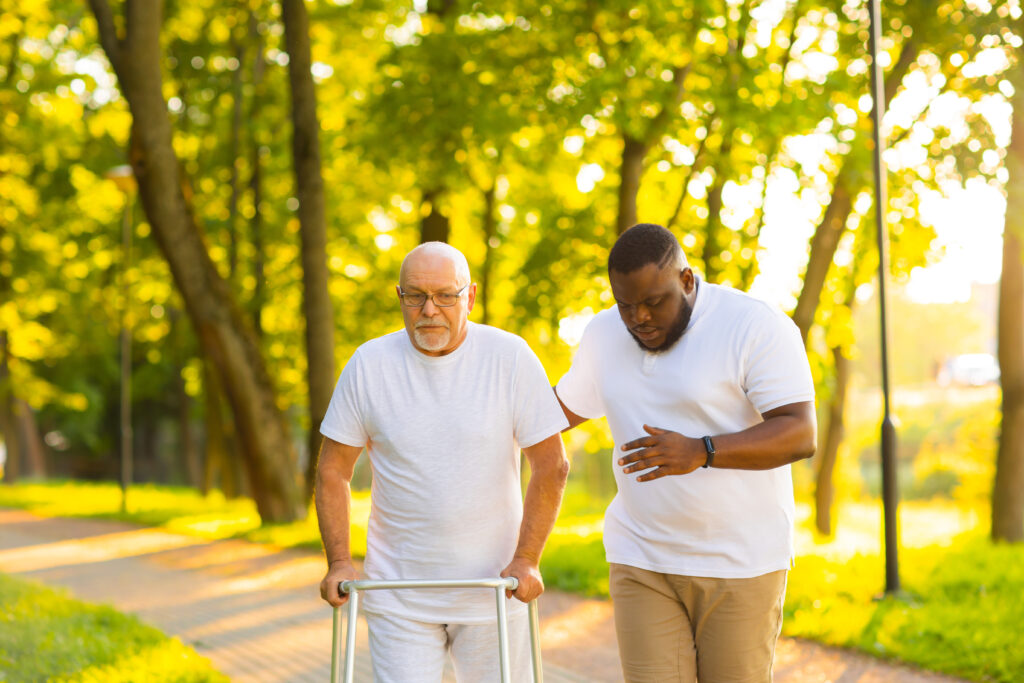
Thanks for stopping by and spending some time with us here on the blog. We welcome all comments and questions! We hope you find value and don’t hesitate to let us know what topics are of importance to know more about.
Take care and see you back here soon,
Pam and Linda
Your Nurse Advocates
“Compassionate care for aging adults and peace of mind for adult children.”
Resources:
Your Nurse Advocate Consulting Website
Join our Free Forum on Speaking out on the Care of Your Aging Parents
https://www.agefriendlycare.psu.edu/the-4ms-explained
https://www.ihi.org/Engage/Initiatives/Age-Friendly-Health-Systems/Pages/default.aspx
https://www.johnahartford.org/grants-strategy/current-strategies/age-friendly/age-friendly-care

